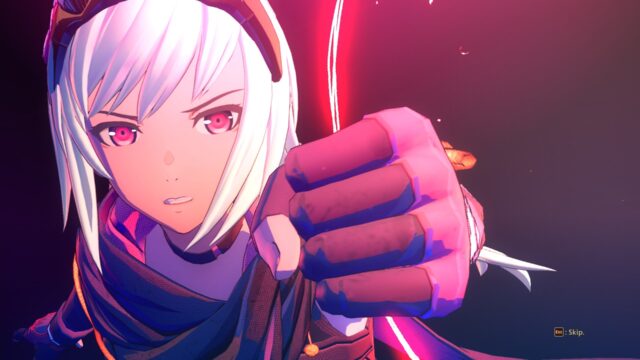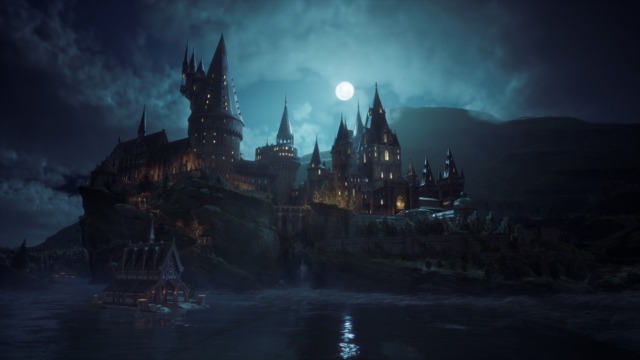OMORI Review: A Beautiful and Scary Fairytale for Adults
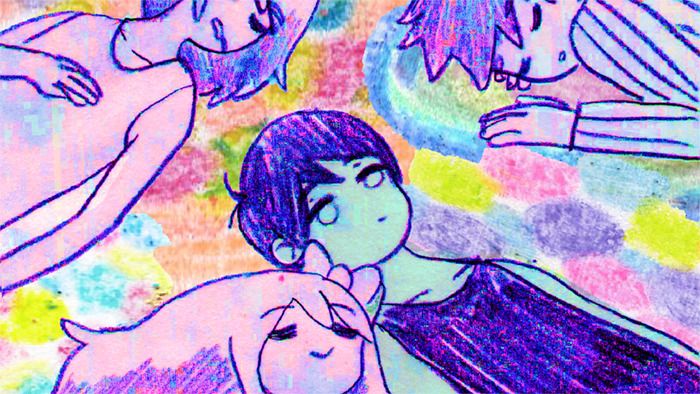
Games made in RPGMaker are usually divided into two types. In 99.9% of cases, they are very below-average remakes of classic RPGs, with standard battles and a simple plot. 0.1% is left for interesting projects. And among them, there are masterpieces. Usually, these are horror games (Yume Nikki, Mad Father, The Witch’s House, Corpse Party), with rare elements of adventure (To The Moon) or RPG (Lisa: The Painful). Such games go unnoticed by people who love AAA titles and top-notch graphics, but firmly take their place on the shelves of their fans’ libraries – with an “extremely positive” rating, their own wikis, forums, and groups of loyal fans. And now – OMORI. At first glance – another small and amusing story on the same engine, from a good artist (Omocat), with interesting graphics and an unconventional plot. Let’s take a closer look.

Our main hero is Omori, a silent and gloomy boy who lives in his small white room with almost no furniture. There is a light bulb hanging from the ceiling, a laptop and a sketchbook by his side. Most of the time, Omori spends his days here, sitting in the corner, hugging his knees and not wanting to go out… but there is a door in the room, and behind the door are his best friends and a wonderful, amazing, beautiful world. Friendship is a miracle, isn’t it?
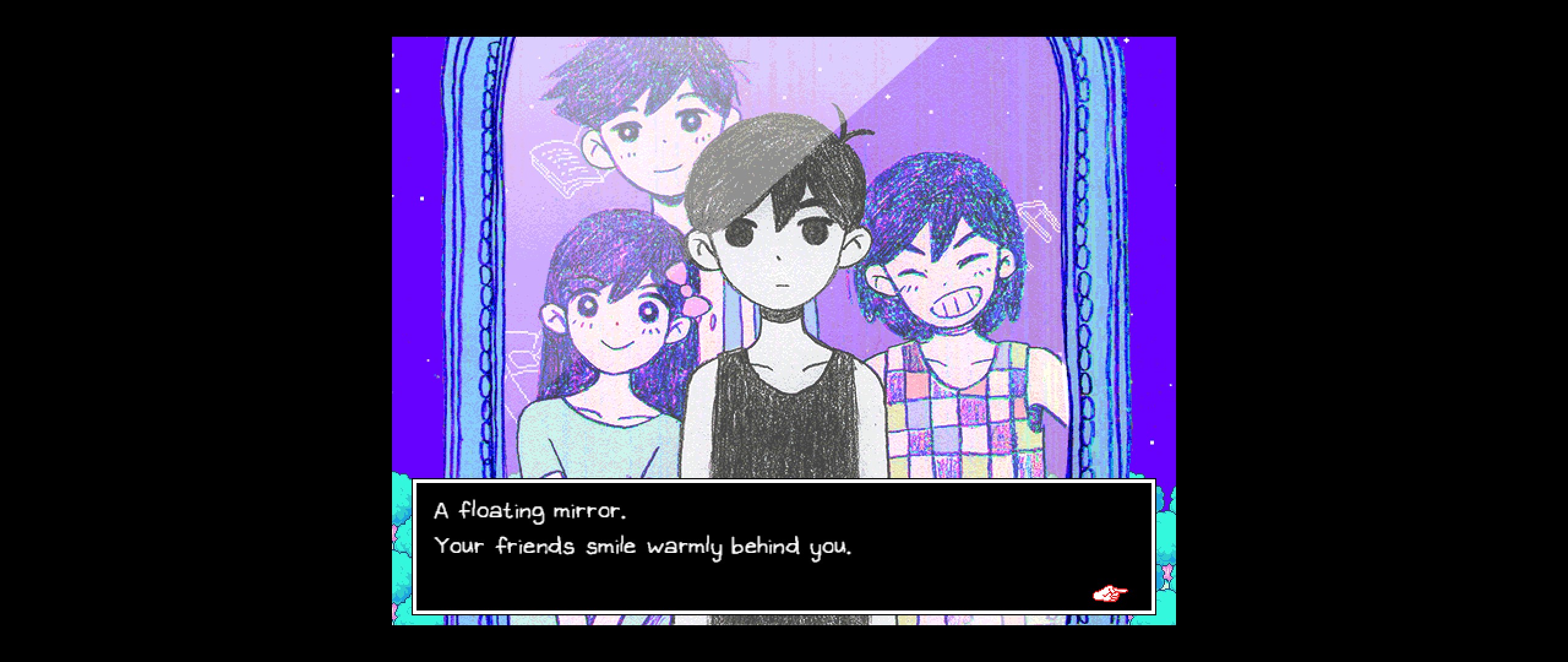
As soon as we step through this door, we understand that the world of Omori is fantastic, insane, and unpredictable. His friends are guarded by a yellow cat the size of a truck and a talking snake, friendly monsters of all colors and sizes run around the playground, spider-rabbits wander through the forest, you can climb to the Moon on a portable ladder, in the desert made of brown sugar, dinosaurs unearth artifacts of human civilization. Beautiful, magically like Alice in Wonderland, enchanting. I want to explore, I want to stay here for a while.
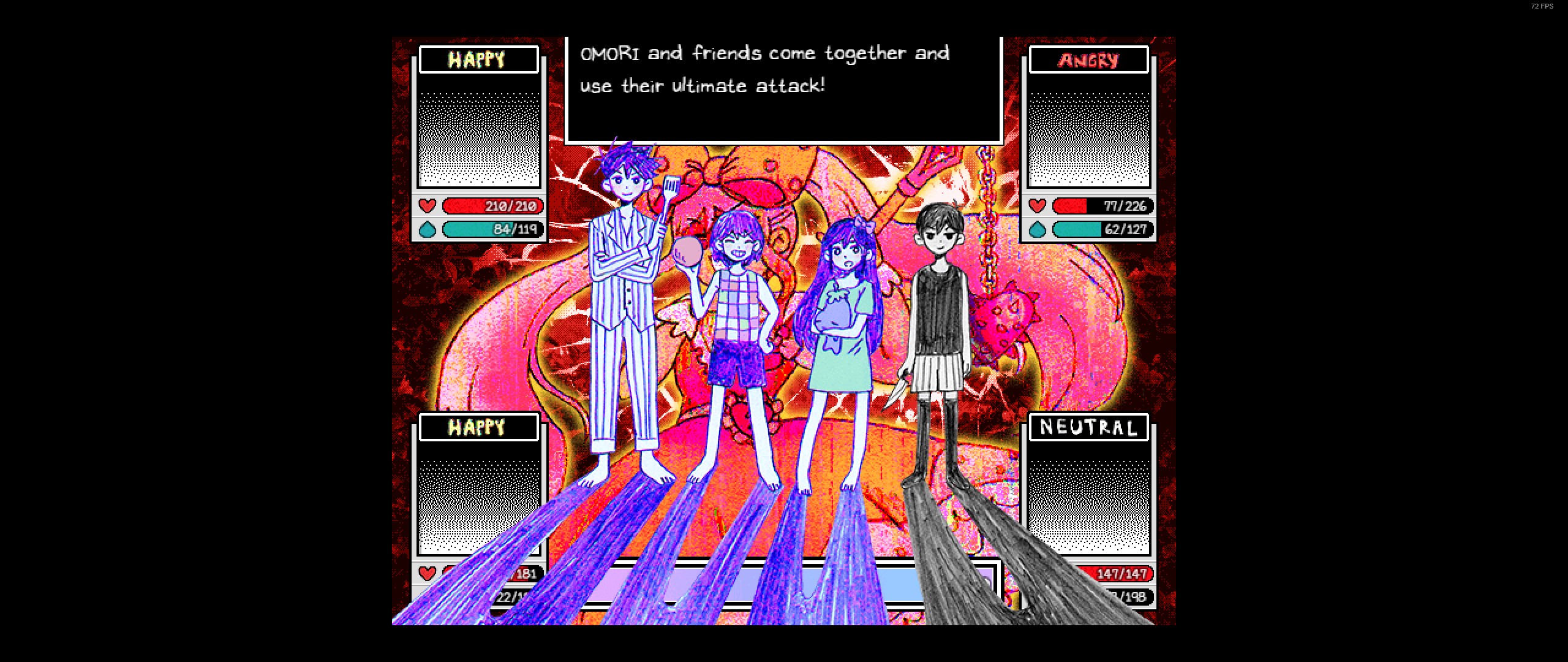
Horror? What kind of horror? Well, how should I put it… it’s in the genre of horror. And even psychological horror.
Wonderful and magnificent worlds, built like protective armor, around a small white prison-like room, don’t come out of nowhere. Dreams are often based on real events. And what lies behind all these beautiful and colorful labyrinths, populated by talkative characters, all the small funny tasks, all the amusing secrets and achievements? And why is Omori the only one in this colorful, watercolor-pencil-shimmering environment whose colors are only black and white? And his constant apathy and silence could be attributed to the “Silent Protagonist” template… but no. Something very bad is happening to this guy.
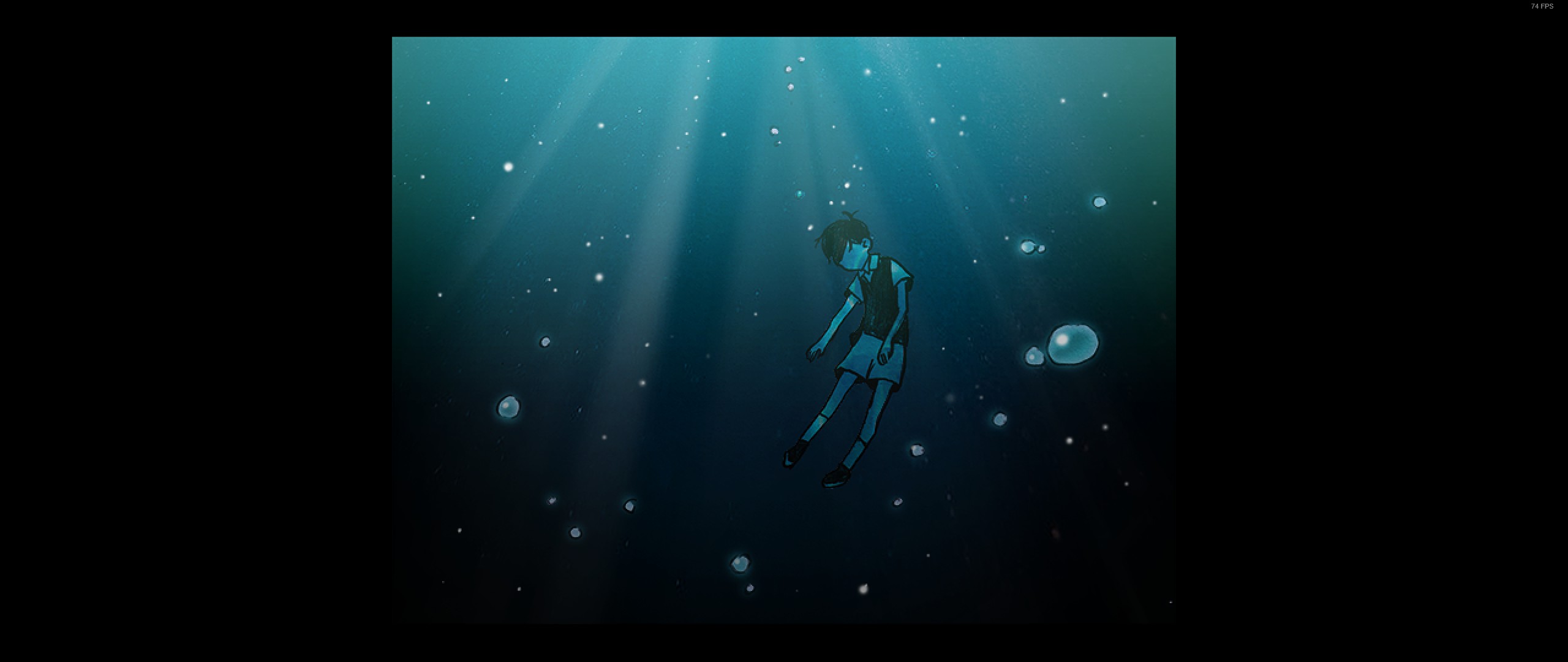
The RPG part here is surprisingly well thought out and very interesting. The party consists of four people: Omori himself and his friends – Aubrey, Kel, and Hero (Hero is his nickname). Each character has four skills that they can equip and use in battle. The heroes (logically – they are kids after all!) fight with something not very suitable for serious fights, but nevertheless quite effective: a plush toy that goes “whack!” to enemies (Aubrey), a basketball (Kel), and, um, a spatula for flipping pancakes (Hero). Omori is the only one in the group who owns a normal weapon – a steak knife. Over time, it will be possible to find more interesting items (for example, anything round and throwable would be good for Kel – a big orange, a coconut, a Jack-o’-lantern…). HP (Hearts) is restored by numerous snacks, and mana (Juice) – by drinks. There is a wide range of Toys – these are instant-use items that deal damage or buff/debuff in battles.
As for equipment, which again is logical, young adventurers won’t have much. They can’t wear helmets and chainmail, after all, right? So, out of all the variety, there is only one equipment slot that fits in their pocket – for a talisman. A stone with a hole for memory, a rabbit’s foot for luck, glasses for attentiveness, golden watches… oh, no, golden watches are completely useless. Sell them! For seashells – the local currency.
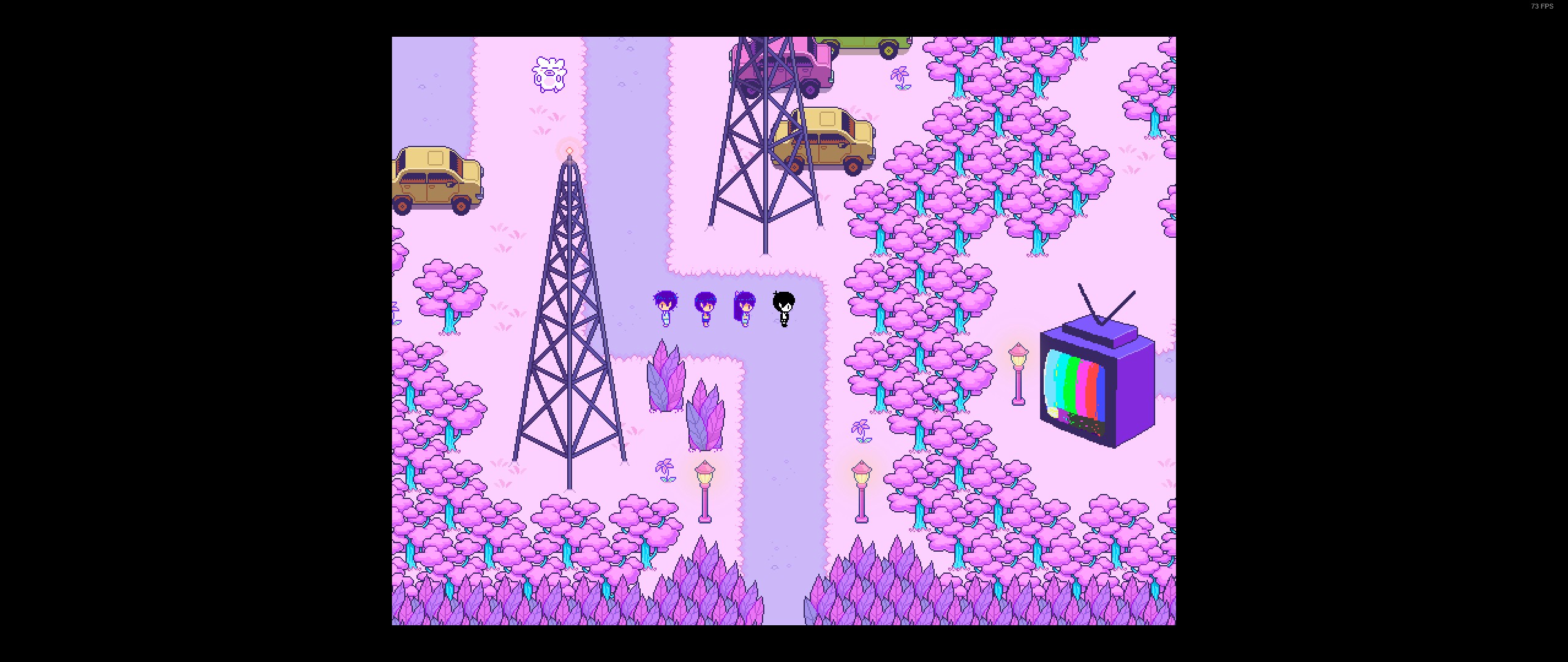
The most interesting and unconventional thing about OMORI, which I haven’t seen before in RPGs, is the mood system. Combat is mainly based on the emotional state of our gang – and the enemies too! Besides the basic “neutral” mood, there are three main moods – Happy, Sad, Angry – and they work somewhat like rock-paper-scissors, plus they provide a range of other interesting additions. Angry deals – but also receives – more damage, Happy misses more often but attacks faster, and Sad attacks slowly and weakly, but is better protected because part of the damage is redirected to mana instead of HP. Additionally, all of this can be combined up to three times: Happy multiplied by two becomes Ecstatic, triple Sad turns into Miserable… Practically all of OMORI’s skills are designed around changing the emotional state – either your own or the enemy’s – to deal strong damage to an enemy with a specific mood, or to create interesting combos with these moods… And in the end, the team works together smoothly, like clockwork, juggling the moods like balls. A very interesting feature that turns simple RPG-maker battles into a real challenge.
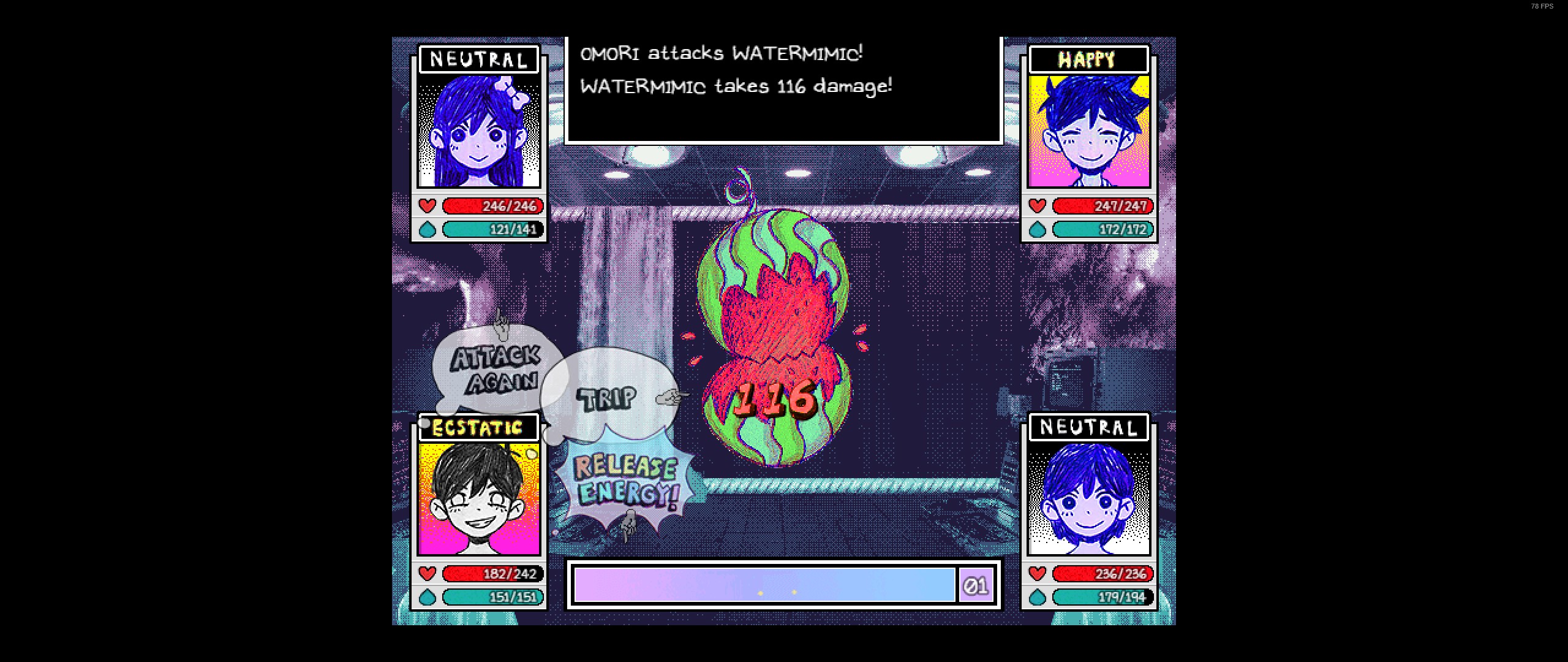
The enemies are still pleasing in battles, of course. Each enemy is a work of cartoon art, huggable, laughable, and worthy of fanart! Omocat’s talents as an artist are boundless, visible in the backgrounds (sometimes the environment doesn’t even resemble an RPG maker) and in the character portraits, but they particularly stand out in the artwork and images of the monsters. Very stylish, very impressive.
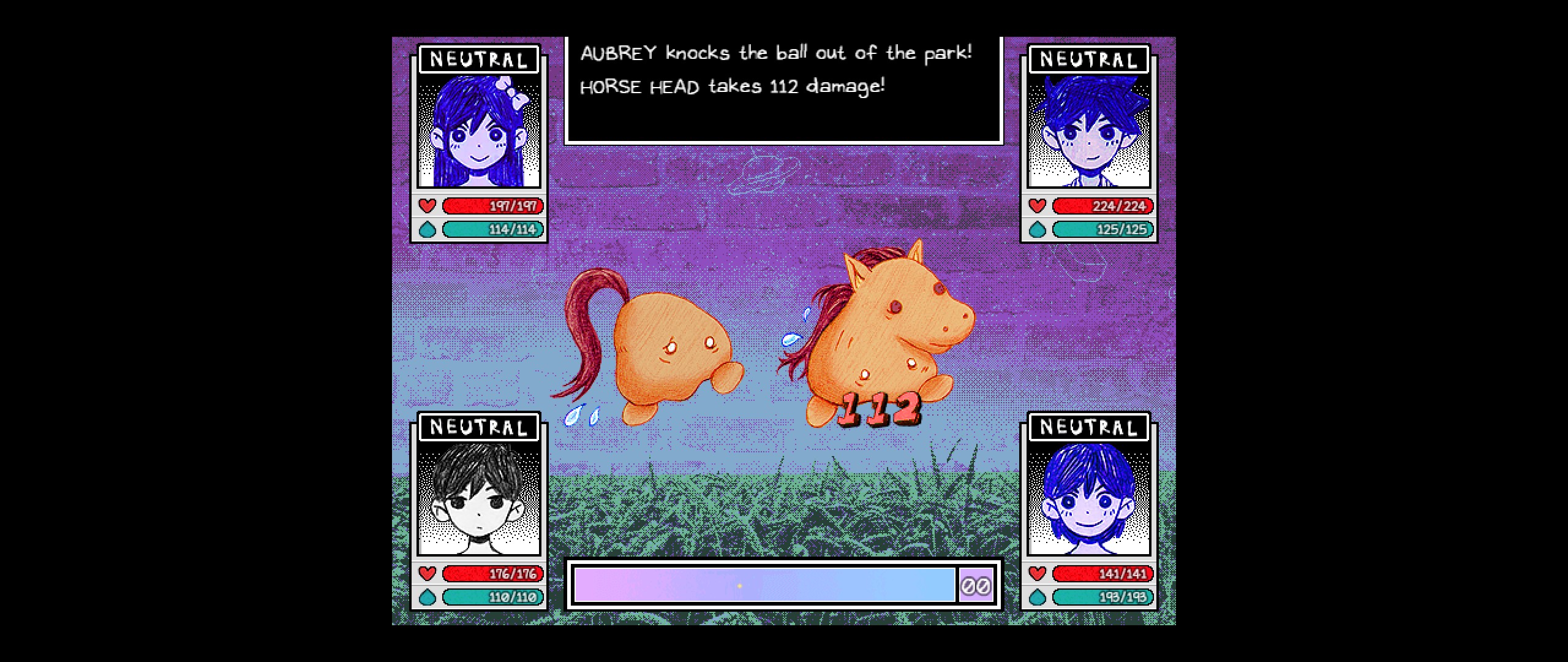
OMORI is a Persona on a budget for those who have missed Persona a lot. With diverse skills and team dynamics, with the plot divided into days (although there are only three days, and you can do as many side quests as you want within one day), with leveling up friendly “catch the ball!” combos. With a world clearly divided into two halves. And with a similar plot – which starts as “a group of teenagers looking for strange adventures” and continues and ends… oh.
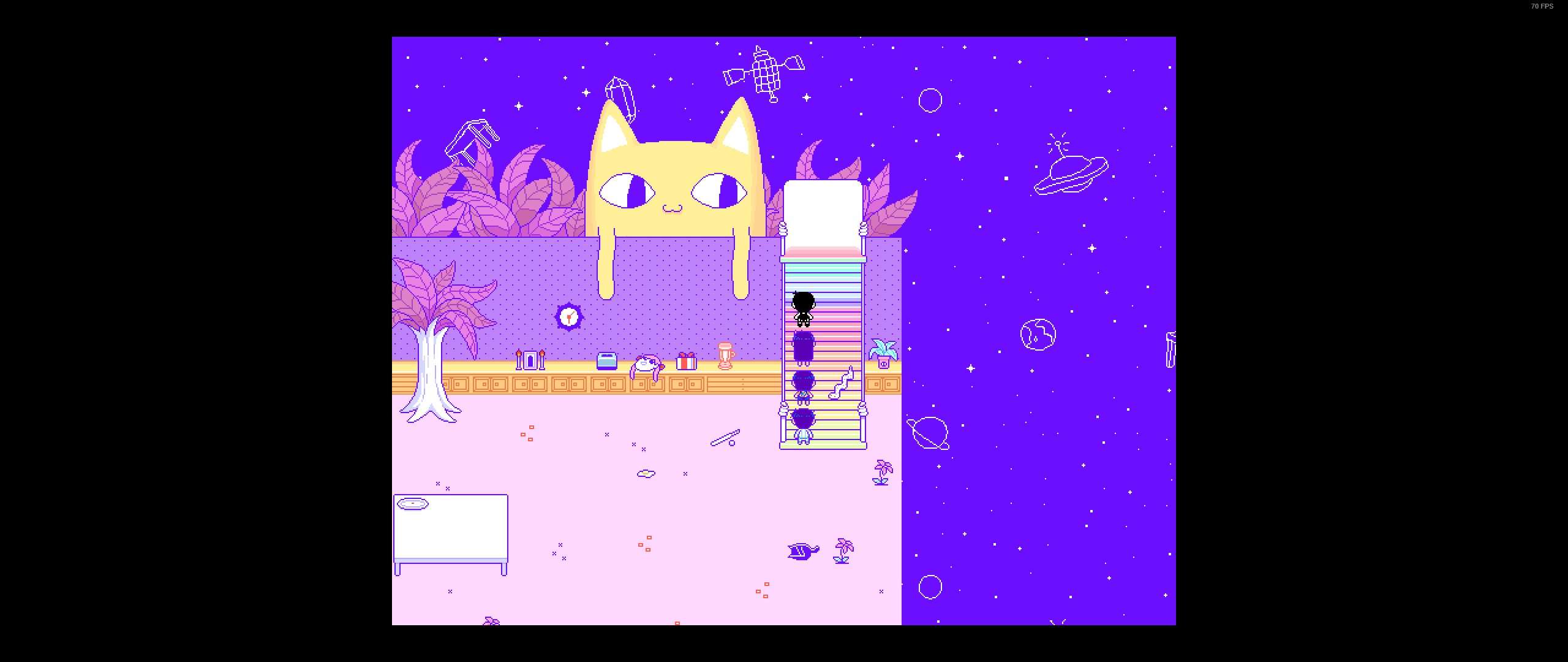
This is a story about the Losers from “It” – without any Derry or Pennywise – who were unlucky enough to find themselves in a situation where everything went horribly wrong.
This is a story about the best intentions that pave not the road to hell, but hell itself, from floor to ceiling.
A sad, heavy, desperate story.

Don’t fall for the cute painted animals and the environment that resembles a flattened Disneyland mixed with Alice’s Wonderland: the game is not for children, everything will be serious. And don’t rush to wrinkle your nose in disgust: “ugh, RPG Maker, how many of these pixels can there be”. OMORI is a rare indie game RPG diamond, on the level of OneShot, Undertale, and Yume Nikki (as well as the Mother/Earthbound series). Personally, I believe that OMORI is much better than Undertale, which rose purely on hype, but that’s a topic for another debate at another time.
You can check the statistics: Overwhelmingly Positive user reviews on Steam, 9.2 User Rating on Metacritic, 88 Metascore. OMORI deserves at least a bit of your attention – it’s truly a wonderful game, with 25-35 hours of gameplay and a lot of emotions.
Share
Discuss
More Reviews

